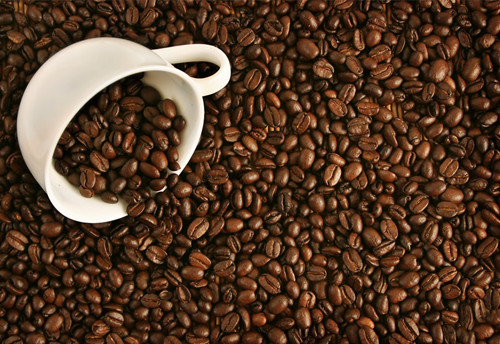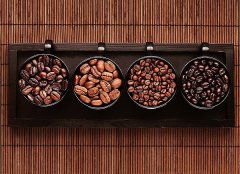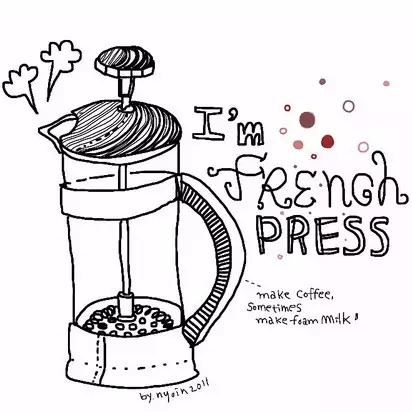Basic knowledge of fine coffee grading of raw coffee beans
At present, there are three main rating criteria for raw coffee beans, and different countries adopt different rating methods according to their own production conditions and national conditions (not all coffee producing countries adopt the same method). Let's introduce these three popular rating methods.

One: classification according to the altitude of the coffee producing area
The main reason for this classification standard is that the quality of coffee produced at high altitude is generally higher than that at low altitude, because high altitude and low temperature, slow coffee production is conducive to the accumulation of good substances. And the raw beans with high maturity have good expansibility when baking, which is beneficial to baking, and the quality is more stable. At present, the coffee producers using this classification standard are Central and South American countries such as Guatemala, Mexico, Honduras, El Salvador and so on. Take Guatemala as an example, the most advanced coffee is called SHB (short for Strictly Hard Bean) very hard beans, which is grown at an altitude above 1350m, followed by HB (Hard Bean) hard beans, planted at 1200m--1400m above sea level, SH (Semi Hard Bean) slightly hard beans, EPW (Extra Prime Washed) super quality water washed beans, PW (Prime Washed) high quality water washed beans, EGW (Extra Good Washed) special quality water washed beans, GW (Good Washed) good quality water washed beans, respectively, at an altitude of 1200m. About 1000m, 800m, 600m Murray 800m and less than 600m.
Second, grading according to the screen.
The way of sieve grading is to grade according to the size of raw coffee beans. Raw beans are graded by determining the size of the beans through a holed iron plate sieve. The size of the hole in the screen is 1x64 inches (less than 0.4mm), so the size of the screen indicates that there are several 1x64 inches. For example, the size of screen 17 is 17x64 inches, which is about 6.75mm, so the larger the number of the screen, the bigger the particles of raw coffee beans. The reason for this grading is that beans with large grains sell better and are more likely to produce rich and varied flavors than small ones. But this is not to say that beans with large grains are of better quality than beans with small grains. Ethiopian coffee beans are generally narrow and small, but their taste is the most unforgettable and favorite, including Yunnan's small seed coffee. it is also highly appraised by the international market. Kenya is one of the most representative countries rated by sieve, along with Tanzania and Colombia (some countries use more than one classification, and the examples given here are representative, mainly in this way). Kenya's most advanced AA++ requires sieves larger than 18, that is, beans larger than 7.15 mm. Kenya beans are graded carefully, including AA++,AA+,AA,AB and so on. Colombia's classification is simpler, divided into Supremo (selected) and Excelso (upper) according to bean size. 80% of the raw beans of the selected grade need to use a sieve of more than 17, and 80% of the raw beans of the upper grade need a sieve of 14 and more than 16, and a maximum of 11% of the beans with sieve 16 are allowed to be mixed with 14 sieve beans. The screen mentioned above is for flat beans, round beans (Pea Berry) has its own set of screen size standards. Generally use the screen of 8Murray No. 12 to grade the round beans.
Third, grading according to the proportion of screen and defective beans.
Defective beans are an important factor that destroys the flavor of the final coffee. Therefore, defective beans should also be removed in the last step of raw bean processing. This has the problem of the number of defective beans, so according to the proportion of defective beans, supplemented by the size of the screen is also a way of classification. Due to the rise of boutique coffee, coffee producing countries pay more and more attention to the quality of coffee, and the control of defective beans is the most important way, so basically using the proportion of defective beans as a grading method or auxiliary basis is becoming more and more common. At present, the main representative countries that use defective bean proportion method are Jamaica, Brazil, Ethiopia and so on. Jamaica is based on the comprehensive rating criteria of producing area, altitude, screen, and defective bean ratio. For example, Jamaica Blue Mountain NO.1 refers to the blue mountain producing area, above 1700m above sea level, with a sieve No. 17 with 18gamble, and the top coffee beans with the most defective beans accounting for 2%. The proportion of defective beans is used as an important basis. Jamaica strictly controls the proportion of defective beans, and the proportion of defective beans in all grades is no more than 4%. Brazil is another special country. Brazil is the largest coffee producing country in the world. Because of its large output and many producing areas, the classification work is quite troublesome, and it is not suitable to adopt a single classification standard, so Brazil also uses a variety of classification methods at the same time. Defective bean proportion, sieve and cup evaluation tests are all used in the grading process of Brazilian coffee beans. Needless to say about the first two, the cup evaluation test is one of the characteristics of Brazilian coffee grading. The so-called cup evaluation test is to evaluate the aroma and taste of raw coffee beans by soaking them in hot water (about 90 degrees) after baking. It is mainly divided into six grades: Strictly Soft extremely mild, Soft mild, Softish slightly mild, Hard difficult, Rio light iodine taste, Rioy strong iodine flavor. The first three grades can be called mild, with a balanced sweet and sour coffee and a mild taste. The latter three taste slightly worse, especially the latter two are the worst. The reason for the iodine smell is that the soil near Rio de Janeiro has a strong iodine smell, and the coffee is dropped on the ground during harvest and is contaminated with the peculiar smell of the adsorbed soil. The above three are the popular coffee grading methods, but not all of them. For example, Ethiopia will take the handling of raw coffee beans as one of the grading criteria. In addition, there is a more and more widely used COE rating system. As coffee producing countries pay more and more attention to coffee quality and the enthusiasm of producers, the classification of raw coffee beans is not limited to the above three main ways. Only with more careful planting can we produce higher quality coffee and get a high rating in the grade evaluation, so the subdivision and strict control of coffee rating is undoubtedly a good thing for the improvement of coffee quality.
The grading system of each producing area:
African countries-Kenya kenya
PB: peaberry
AA Plus-plus
AA plus
AA: Screen 17 and 18
AB: screen 15 and 16
C
E
African countries-Ethiopia
300 grams of raw beans as the basis for calculation
1: 0-3 defects
2: 4-12
3: 13-25
4: 20-45
5: 46-100
6: 101-153
7: 154-340
8: over 340 = substandard
South America-Colombia
Maragogype: special trees Marago Rippi, elephant bean
Supremo: screen > 17
Excelso: screen 15-16.5
UGQ: Usual Good Quality: Screen 12-14
South America-Brazil
Type Defects (COB) (New York) (Le Havre)
2 4 6 8
2/3 8 9 12.5
3 12 13 17
3/4 19 21 23.5
4 26 30 30
4/5 36 45 58.5
5 46 60 87
5/6 64 123
6 86 158
Central America-Guatemala
Good Washed: altitude 700m (GW)
Extra Good Washed: 700Universe 850m (EGW)
Prime Washed: 850Universe 1000m (PW)
Extra Prime Washed: 1000Universe 1200m (EPW)
Semi Hard Bean: 1200Compact 1350m (SH)
Hard Bean: 1350max 1500m (HB)
Fancy Hard Bean: 1500Comp1600m (FHB)
Strict Hard Bean: 1600thumb 1700m (SHB)
Central America-El Salvador
Washed washing
Central Standard: 5000000m (CS)
High Grow: 9001,200m (HG)
Strictly High Grown: > 1200 m (SHG)
Natural sun exposure
Coriente
Superior
Caracoil
Hawaii, Kona.
Kona Extra Fancy: screen 19 maximum 10 defects
Kona Fancy: Screen 18 max. 16 defs.
Kona Prime: no size requirement max. 25 defs.
Kona Caracoli No.1: Screen 10 max. 20 defs.
Jamaica jamaica
Blue Mountain
High Mountain Supreme
Prime Washed Jamaica aica
Grade Grade
Grade I: screen 18
Grade II: screen 17
Grade III: screen 16
Peaberry
Indonesia
300g raw beans are calculated based on Grade based on 300g.
1: 11 defects
2: 12-25
3: 26-44
4a: 45-60
4B: 61-80
5: 81-150
6: 151-225
(online articles)
Important Notice :
前街咖啡 FrontStreet Coffee has moved to new addredd:
FrontStreet Coffee Address: 315,Donghua East Road,GuangZhou
Tel:020 38364473
- Prev

Introduction of several estates growing boutique coffee beans
Panamanian Emerald Manor Panamanian Emerald Manor Esmeralda Manor (Panama Geisha Hacienda La Esmeralda) in its early years, Panamanian Emerald Manor Esmeralda Manor (Esmeralda Manor) mostly followed Japan in its recognition of top coffee, while Geisha, with its hurricane-like power, swept through the coffee industry, and this coffee revolution was so menacing that it had occupied the throne of the coffee kingdom for a long time.
- Next

A trip to explore the original taste of coffee in a French press.
Among the many coffee utensils, the French pressure pot is undoubtedly the first simple and convenient extraction.
Related
- What is the meaning of lactic acid fermentation with coffee bean treatment?
- How to judge the state of foam by sound?
- How does the latte pull out the unicorn pattern? Come to get for a little trick to improve the flower pull!
- Will flower pulling affect the taste of the latte?
- Do you know the history of coffee?
- The difference between honey treatment and sun washing what is raisin honey treatment?
- What kind of milk can a novice use to make coffee foam to keep the foam longer? The correct method and skills of milking tutorial sharing
- Why do washed coffee beans taste sour? Flavor characteristics of washed Coffee
- Introduction to the skill of how to practice the size and height of water injection around the circle of hand-brewed coffee
- How do beginners practice coffee flower drawing from scratch?

